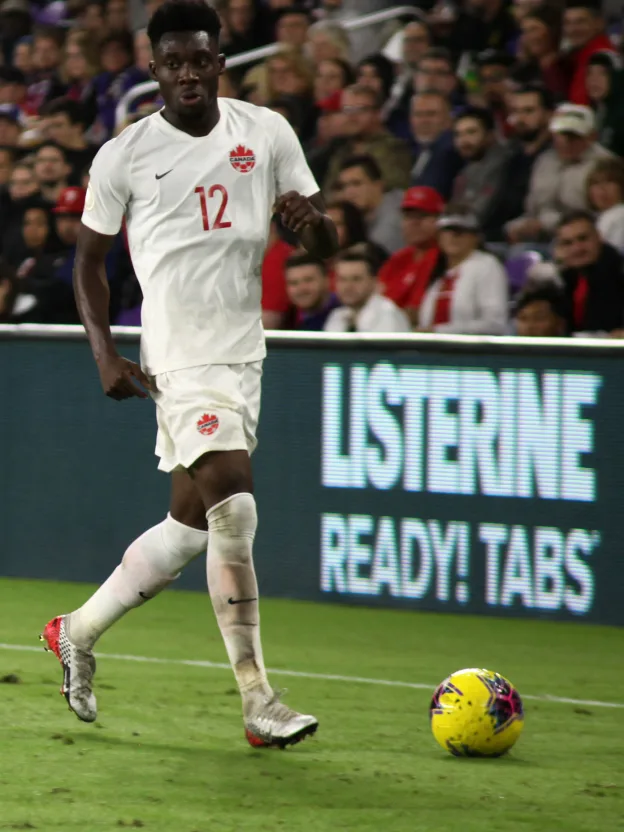Canada coach John Herdman went all in against the United States in Concacaf National League action, and left with major learnings in a tough 4-1 loss on Friday night loss in Orlando. There was only one thing on the minds of the Canadian players, and that was a win, which would have meant a much better chance at qualifying for “the Hex” next summer. A tie would have also secured Canada top of the group and a place in Nations League finals, but who plays for a tie? Certainly not Herdman. Game management is another discussion all together, but I admired Canada’s desire to go for the win. Having played for Herdman, we often operated with the mantra “in order to win, dare to lose,” and this seemed to be the mindset of the Canadians in Florida. Here are my three takeaways from the game.
RELATED READING: Canada embarrassed by U.S. in Concacaf Nations League
Canada undone on set pieces
As an-ex player who played under Herdman, I can tell you that there are no details too small while preparing for an international fixture, both as a coach and a player. The integrity that I know goes into every match preparation would suggest that certain aspects of the game plan were prioritized ahead of Friday’s match, and some were not in the forefront of the game plan. Although that may be hard for some to digest after a loss of this nature, these are the realities of short training camps with nearly no time to prepare for games. You also expect your players to be in game rhythm, and attentive to the small details, such as man-marking and winning your battles inside the box. As a coaching staff you are simply unable to prepare for everything with the same level of intensity and attention to detail. In this particular case, Canada had two full days of training together, one of which was lighter in load based on some players’ recent activities in the MLS Cup, and traveling from Europa. The U.S. team, on the other hand, ran a 10-day camp in preparation for this match. Defending set-pieces was the team’s Achilles heel, accounting for two of the four goals on the night. The timing of the goals, coming in the second and 33rd minutes, were bookends to what was an already lackluster first half. However, if I stick to the set pieces, the moments that lead to them were equally as devastating as the breakdowns within them. The first goal by the U.S. was a case of classic ball watching in zonal defending areas where accountability can be a challenge with less developed partnerships such as Steven Vitoria and Doneil Henry. The second goal, coming from an unnecessary Alphonso Davies foul in a critical area, saw Aaron Long head home off a free kick into the box after another miscommunication from the Canadian centre backs. The good news? I doubt this will happen again in future games. Lessons learned.
RELATED READING: CanMNT Report Card: How each player fared against U.S.
U.S. makes key tactical adjustments
Herdman perfectly nailed his tactics in Canada’s 2-0 win over the U.S. in Toronto last month. I consider “nailing tactics” to be nullifying your opponent’s threats while maximizing your opportunities. This was done, almost to perfection in that last match, which is why everyone expected the same this time around. Credit must be given to Gregg Berhalter’s tactical adjustments. The U.S. coach got it right the second time around, changing his team’s defensive organization to a 4-2-3-1 to match up with Jonathan Osorio and Scott Arfield, essentially taking them out of the match and eliminating Canada’s engine room. On top of that, the U.S. was patient with their defensive shape, but still had bite, looking cohesive in their efforts to regain the ball. This led to lethal attacking transitions, which were designed to take advantage of the space left by Canada’s high full backs Richie Laryea and Davies. Goalkeeper Brad Guzan did not play short nearly as much as Zack Steffen did last month, clearly having learned that the Canadian press stifled them and lead to the two goals. The U.S. decided to hedge their bets and go long, competing for first and second phases, which they won a majority of the times, gaining them valuable territory higher up the pitch.
RELATED READING: Canadian soccer Twitter reacts to CanMNT’s defeat to U.S.
Late surge by Canada
A positive for Canada was the flurry of late chances it created, suggesting that the team’s spirit is intact. That grit is part of the Canadian DNA and is what comes with wearing the badge, so to see the team playing like that in the dying minutes was promising. The goal from Vitoria in the 72nd minute was exciting and had people wondering if there would be a miracle comeback. We saw individual brilliance from Junior Hoilett, which shows Canada’s strength off the bench and promise for the future. Davies almost scored on an individual dribbling effort and made everyone question why he wasn’t in those attacking positions more often. Herdman intended to have him affect the play higher up the field by using him as a left back, but based on a number of problems, namely a lack of possession, it never came fruition. It was a tactical decision that will continue to be dissected going forward. While the debates will ensue and criticism will no doubt follow, I remain positive that one result, albeit a big loss, does not define a team, program or the future of Canadian men’s team.
Carmelina Moscato scored two goals in 94 appearances for the Canadian women’s team from 2002 to 2015, helping the Reds win an Olympic bronze medal in 2012. Today, Moscato serves as Commissioner of League1 Ontario Women’s Division, as well as Manager of Women’s Professional Football Development for Canadian Soccer Business (CSB).
